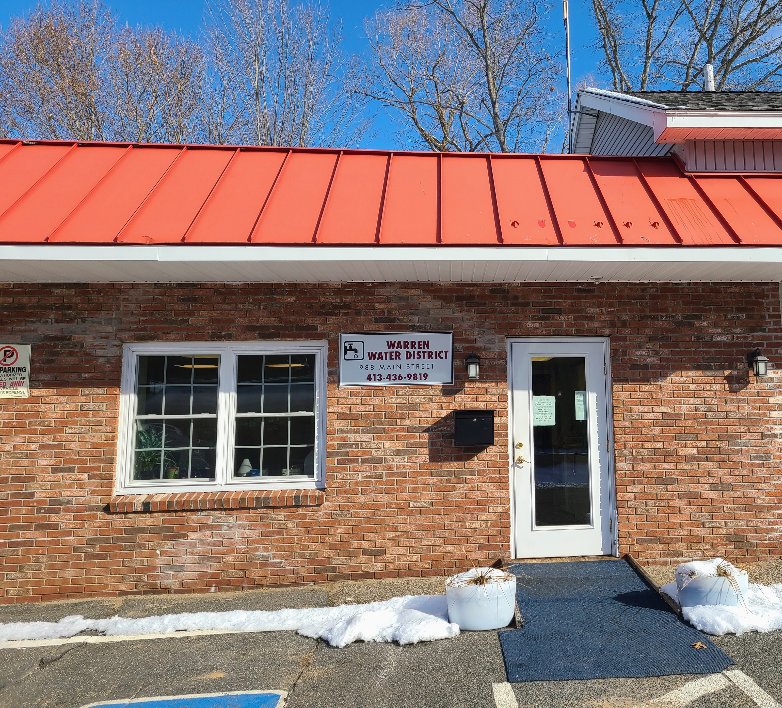Mon - Fri:
09:00 AM - 01:00 PM
Warren Water District was established by the Acts of 1920. We continue to be a privately owned business. The District is governed by a three member Board of Water Commissioners. The Commissioners are elected at the Annual Meeting held the 2nd, Thursday of May each year.
The Current Board of Commissioners are:
Loretta Beaudry, Clerk David Kelly, Agent
Cynthia Baxter, Member
MEETINGS are held at 988 Main St., Warren, MA 01083:
January 3, 2024 at 10 am
January 17, 2023 at 10 am
Night Meetings are held upon request. To be put onto the agenda for a meeting please contact the office at least 1 week prior to the meeting date.
OFFICE CLOSED:
Monday December 25, 2023
Monday January 1, 2024

